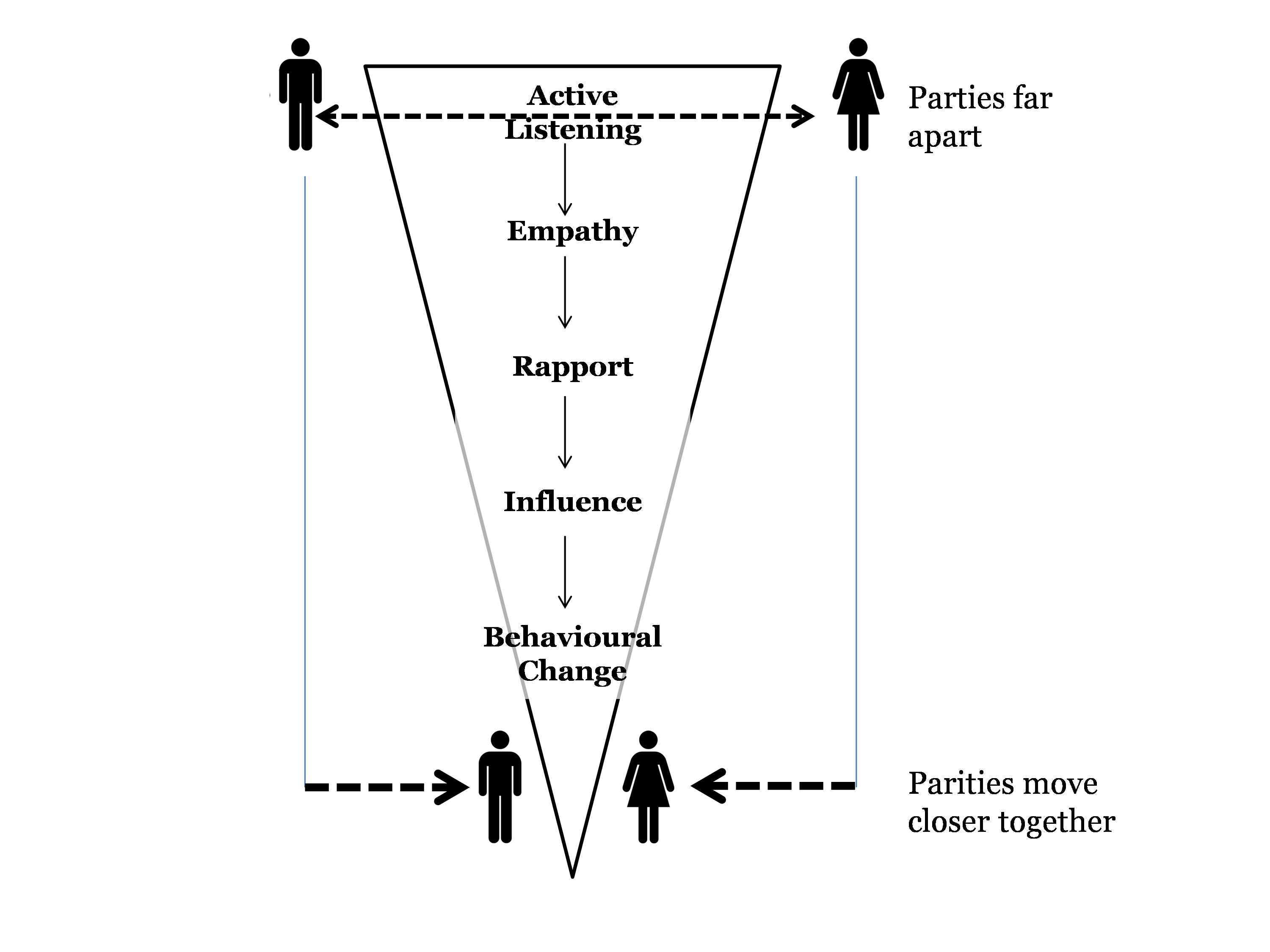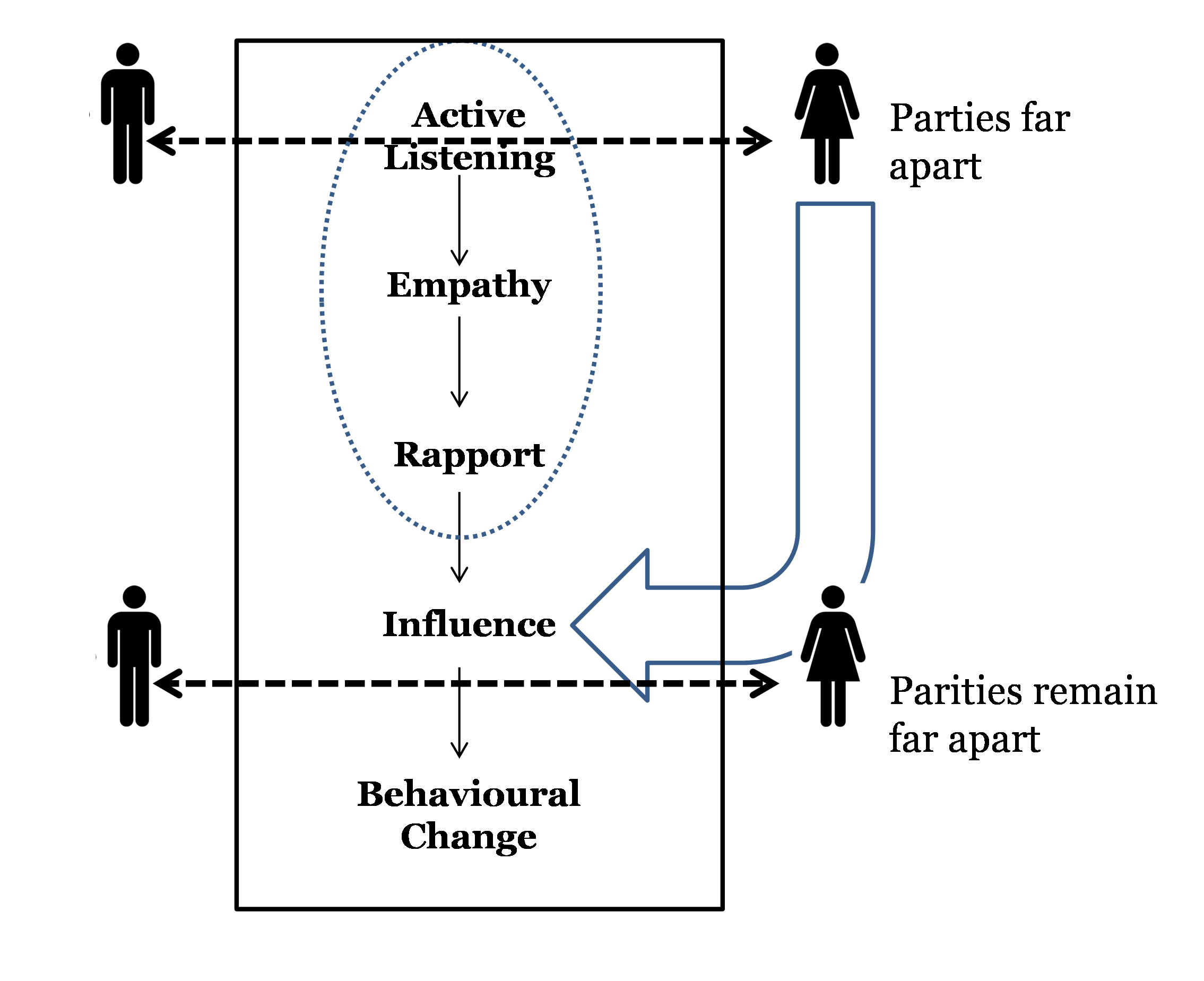As a leader in an organisation, you regularly meet and engage with a variety of stakeholders. They could be suppliers, consultants, customers, lobby groups, trade union representatives, government officials, social media pressure groups or industry bodies.
Some of these relationships are transactional – you exchange what is needed – time, money, resources – and proceed onwards. But some relationships are especially important. You may have to deal with a highly influential person whom you have never met before, but with whom you have to build a relationship of trust within a short time.
The context of your meeting may be adversarial: your organisation may be sitting with an embarrassing product failure, or a pollution spill, or a supplier far up your supply chain may unknowingly be using child labour.
In a situation like this, how you deal with the opening stages of the relationship can be the difference between an awkward, but workable compromise or outright damning failure.
To do so is the art of engaging with The Other. The Other is a person different from you. The other is someone who comes from a very different background and set of life experiences. There is little common ground between you and the other. And there is likely to be significant resentment and aggression from at least one of the sides in this relationship.
How do you build a relationship of trust in an adversarial, low-trust situation where you have nothing to work with?
The usual, and utterly ineffective way is to start by trying to convince the other person that they are wrong or that they misunderstand the situation. This is precisely the wrong action to take.
 Consider the diagram alongside. The parties start far apart at the top of the diagram. There is a considered, sequential process to build trust and secure the desired behavioural response from the person sitting opposite you.
Consider the diagram alongside. The parties start far apart at the top of the diagram. There is a considered, sequential process to build trust and secure the desired behavioural response from the person sitting opposite you.
A significant part of leadership lies in fostering relationships between organisations. The actual relationships are created, maintained and destroyed by the people within those organisations. Sometimes we regard our interpretation of the hard facts as refutable, and we are unwilling to accommodate differing views.
When the person on the other side of the table – The Other – exhibits anger and impatience, it can often arise from fear, embarrassment, or the loss of turf, power and prestige. They withdraw from the relationship-making process when they feel that they are ignored, judged, or being lectured. Whereas they may be seeking greater empathy or responsiveness.
The diagram above indicates the sequence of ringing the parties closer together. There is a structured sequence of discrete activities required to move someone from being distant to being supportive. It involves the steps of active listening, demonstrating empathy, building rapport, and then exerting influence to secure behavioural change.
Below is a summary of each of the five steps involved, and the behavioural responses required.
|
Listen to the other persons and demonstrate to them that you are listening. Don’t tell them what they should think – listen to what they are telling you! |
|
Understand their position and their contexts – why are they taking that position on that issue? Ask questions to expand your understanding. Express understanding of their emotions. |
|
Demonstrate to stakeholders that you understand their position and context. Begin to build trust. Clarify the common ground – the matters on which you agree. |
|
Undertake problem-solving, using the base of trust established. It is only at this stage of the relationship do you begin to put your view forward. This is where the process of negotiation begins, not before. |
|
Get the other side to act in a supportive manner. Acknowledge them for their concessions. Be clear about the behavioural response you require from them. |
The process outlined above allows you first to establish a relationship, with some degree of trust and then and only then, do you pursue your desired outcomes.
 What invariably happens, is if a sequenced process is not followed, the participants miss out on the first three steps and go straight to the Influence stage. They try to persuade each other that their own position is the right one. It now becomes a matter of who can shout the loudest.
What invariably happens, is if a sequenced process is not followed, the participants miss out on the first three steps and go straight to the Influence stage. They try to persuade each other that their own position is the right one. It now becomes a matter of who can shout the loudest.
The stages of Active Listening, Empathy and Rapport building are missed out. The unfolding engagement becomes a contest in winning and not first understanding. The situation ends in a stalemate where each party blames the other for being difficult and intransigent. The relationship has been irreparably damaged.
The basics of active listening are easy to list but less easy to observe. Here are some pointers on building a climate of conciliation:
- Listen to what the other party has to say.
- Don’t interrupt, disagree or defend.
- Use affirming body language, like nodding your head and acknowledging comments like ‘yes’ and ‘uh-huh.’
- Reflect the other party’s position back to them. “What I am hearing you say is…”
- Ask questions for clarity of understanding and to show that you are engaged in the conversations.
- Don’t try to defend your position, the time for that will come later when the relationship has stabilised, and you can begin to influence. Concentrate fully on understanding the other party’s position.
- Ask open-ended questions. Avoid yes-no answers. “Help me to understand ….” “What are the reasons for…”
- Use strategic pauses. Encourage the other side to keep talking by staying silent. Stop talking when the situation gets emotional.
- Encourage them. A thoughtful ‘yes’, or an open ‘I understand how that makes it difficult for you.’ will keep you in touch with each other.
- Mirroring is a helpful technique to show that you are connected in the relationship, but without conceding position or power. The other party might say: “We are being pressured to [do something.]” and your response may be neutral – “Lots of pressure, huh.”
- Paraphrasing is a powerful way to keep the conversation moving without compromising your position. Repeat what the other party has said but do so in your own words.
- Emotional labelling is a good way to get a connection. “I understand how angry you must be about that.” “That is incredibly frustrating.” Don’t invalidate their emotion by saying they should not feel like that.
As a business leader, you are constantly called upon to build relationships with The Other. The Other can span cultures, languages and continents. Being open to others helps you understand your own privileges and prejudices. You know the baggage you bring into the room. You build empathy and a deep understanding of human relationships.
You can build trust where others see aggression and enmity. You will grow your circle of influence. The ability to engage with The Other is a powerful leadership asset. Use it well, use it wisely and others will be amazed at your skilful management of fractious human situations.






